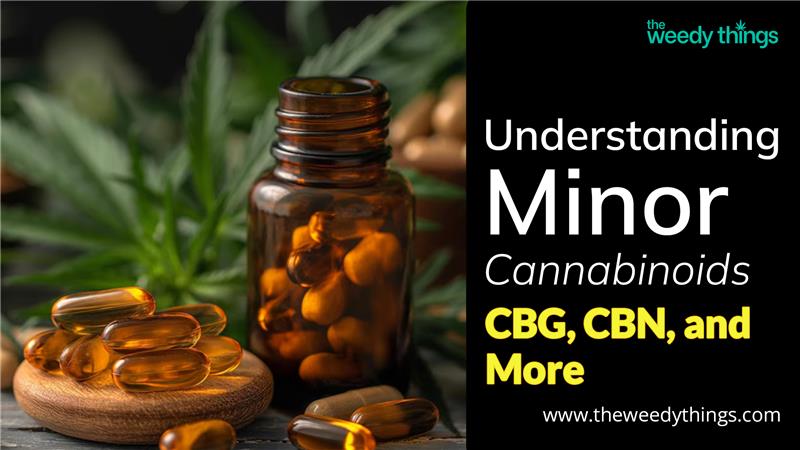When most people think of cannabis, they immediately think of THC (the psychoactive compound that gets you “high”) or CBD (the non-psychoactive compound praised for its calming effects). But did you know that the cannabis plant contains over 100 other cannabinoids — often called minor cannabinoids — each with unique potential benefits?
In this article, we’ll explore what minor cannabinoids are, focus on two of the most talked-about ones — CBG and CBN — and touch on a few more that are gaining attention in the wellness and medical world.
What Are Minor Cannabinoids?
Minor cannabinoids are naturally occurring compounds in cannabis that are present in much smaller amounts compared to THC and CBD. Despite being less abundant, they interact with your body’s endocannabinoid system (ECS) and may offer a variety of therapeutic benefits.
As cannabis science advances, researchers are discovering how these minor cannabinoids can contribute to health and wellness — sometimes complementing or even surpassing the effects of THC and CBD for specific needs.
CBG: Cannabigerol — The “Mother” Cannabinoid
What is CBN?
CBN, or cannabinol, is a cannabinoid that forms when THC ages and oxidizes. Unlike THC, it produces only mild psychoactive effects, but it’s best known for its sedative properties.
Potential Benefits of CBG:
- Anti-inflammatory properties, especially for gut health (studies suggest it may help with inflammatory bowel disease).
- Neuroprotective effects — potentially beneficial for conditions like Huntington’s disease.
- May help lower intraocular pressure, making it of interest for glaucoma research.
- Antibacterial effects — including activity against resistant bacteria like MRSA.
- Appetite stimulation without strong psychoactive effects.
CBG is typically found in hemp extracts, oils, and specialty flower strains bred for higher CBG content.
Other Notable Minor Cannabinoids
a) CBC (Cannabichromene) — May have anti-inflammatory, anti-depressant, and pain-relieving effects.
b) THCV (Tetrahydrocannabivarin) — Sometimes called “diet weed” because it may suppress appetite and support weight loss, while also showing potential for regulating blood sugar levels.
c) CBDV (Cannabidivarin) — Studied for its potential to reduce seizures and help with autism spectrum disorders.
d) Delta-8-THC — A milder, less intoxicating form of THC with anxiety-reducing properties.
Each of these cannabinoids has a unique chemical structure and interacts differently with your ECS, offering specific potential benefits worth exploring as research continues.
Why Minor Cannabinoids Matter
Understanding minor cannabinoids expands your options for using cannabis in targeted ways. While THC and CBD are incredibly valuable, minor cannabinoids may offer benefits with fewer side effects, or they may complement major cannabinoids through the entourage effect, where all the plant’s compounds work synergistically.
Tips for Trying Minor Cannabinoids
Look for lab-tested products to ensure purity and potency.
Start with a low dose — especially for cannabinoids you haven’t tried before.
- Experiment with different ratios of cannabinoids to find what works best for your needs.
Consult a healthcare provider if you’re using cannabis for medical reasons.
Frequently Asked Questions
Minor cannabinoids are compounds in cannabis found in much smaller amounts than THC and CBD, but they still offer unique therapeutic benefits.
CBG may help with inflammation, pain, glaucoma, bacterial infections, and even appetite stimulation.
Most minor cannabinoids derived from hemp (like CBG and CBN) are legal under federal law in many countries, but always check local regulations.
Look for reputable products like tinctures, capsules, or gummies that clearly list CBG, CBN, or other cannabinoids on the label and include lab test results.
Many users report that CBN helps improve sleep quality and reduce insomnia, thanks to its sedative effects.




